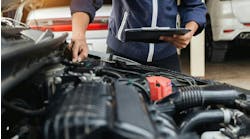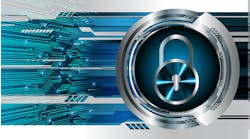Opinions on the usefulness of Mode $06 vary greatly. Let's look at it together and then decide.
OK, I admit it. When it comes to my work, I can be a real "geek." But with the ever-changing technology in this business, you need to stay current in order to survive.I've heard both sides on the usefulness of Mode $06 data; I have even played with it from time to time. A recent experience with a Ford Explorer, however, piqued my curiosity so much I started searching for more information. Allow me to share what I found out.
SOME BACKGROUND
The first-generation of on-board diagnostics (OBD I) left a lot to be desired, at least from an independent tech's point of view. Every manufacturer had different data link connectors (DLCs), different communication protocols and different code definitions. In the early 1990s, legislation was passed to address these issues. The legislation also called for more thorough self-diagnostics for emissions-related systems – beyond that of simple continuity and pass/fail tests.
The Society of Automotive Engineers (SAE) developed guidelines for manufacturers and equipment makers to standardize the DLCs, code identifiers and communications protocols. They also developed standard diagnostic "modes" in a document referenced as "SAE J1979." You're already familiar with most, if not all, of them, but let's do a quick review. Note: If you didn't already know it, the "$" sign denotes the number as a hexadecimal. It's for the computer to understand and really has no impact on us as techs.)
MODE $01: CURRENT POWERTRAIN DIAGNOSTIC DATA
This mode provides access to "active" data, such as fuel trims, oxygen sensor voltages, engine temperature, etc. Some manufacturers include more data than required; some don't. Controller Area Network (CAN) vehicles, with their increased capability, typically show more information than non-CAN vehicles. Mode $01 also displays Malfunction Indicator Lamp (MIL) status as "on" or "off." If "on," it also will indicate which control module requested the MIL. Last, the on-board monitor status is displayed here – but more on that later.MODE $02: POWERTRAIN FREEZE FRAME DATA
If a code is set, the conditions that were present at the time the code was registered are listed here. This information can give a tech an idea of the operating conditions that were present when the fault occurred.
MODE $03: POWERTRAIN DIAGNOSTIC TROUBLE CODES (DTCS)
We all know this one.
MODE $04: CLEAR/RESET DIAGNOSTIC INFORMATION
This mode clears codes and freeze frame data. It also does one more thing. Remember the on-board monitors I mentioned? They are also cleared and reset.
MODE $05: OXYGEN SENSOR MONITOR TEST RESULTS
This mode is specific to the on-board testing of the oxygen sensors. On CAN vehicles, it is a part of Mode $06. While it's not specifically a part of this topic, it's a good tool for checking on the health of the sensors.
MODE $06: LATEST TEST RESULTS FOR NON-CONTINUOUS MONITORS
First, a word on the on-board monitors. Simply put, an OBD II "monitor" (with the exception of the Comprehensive Component monitor) is a test of a particular emissions-related system that's operated by the Powertrain Control Module (PCM).Some monitors run all the time, such as fuel system, misfire detection and comprehensive components and are called "continuous monitors." Others run only once per drive cycle, including EGR, EVAP and catalyst efficiency. These are the "non-continuous monitors." As mentioned earlier, Mode $01 shows the status of these monitors, typically as "ready" or "not ready," or "complete" or "not complete," depending on the scan tool. See Figure 1.
Each of these monitors is composed of a number of individual tests. Mode $06 is where you'll find the results and standards for these tests. In 2002, regulations were passed that also required some misfire monitor test results to be included in Mode $06, effective in the 2004 or 2005 model-year. You will find these results on those vehicles that went to the CAN protocol in those model years. Keep in mind that Mode $06 is a little different with CAN than it is with pre-CAN models.MODE $07: LATEST TEST RESULTS FOR CONTINUOUS MONITORS
Some scan tools refer to Mode $07 as "DTCs detected during last drive cycle" or "Pending DTCs." Many codes are now two-trip codes, requiring them to be present on two consecutive monitors in order to turn on the MIL. This allows the PCM to ensure there is a problem and avoid false MILs. While you won't find individual test results like you do in Mode $06, a failed continuous monitor will log a "pending" code that you will find here. Also, the same regulations that require misfire reporting in Mode $06 also require non-continuous monitor pending codes to be reported in Mode $07.
A quick note on two-trip codes. Many non-continuous monitor failures are two-trip codes. Because these monitors only run once per drive cycle, it will take two completed, consecutive drive-cycles with the monitor involved to trigger the MIL.
This is a consideration especially for EVAP monitors, where they will often not complete on a given drive-cycle because all the conditions were not met. An EVAP code can be "pending" for several trips and waiting for the second consecutive monitor to complete.
Continuous monitors, on the other hand, run all the time and will turn on a two-trip code on consecutive drive cycles if that failure is noted during monitor operation. With the exception of misfire or fuel trim codes, the MIL will turn off if three consecutive monitors are completed with no failure noted. Misfire and fuel trim codes must be retested under the same conditions three times before the MIL will turn off.MODE $08: BIDIRECTIONAL COMMUNICATIONS FOR ON-BOARD TESTING
Currently, the EVAP system is the only one listed here. If the vehicle you are working on supports this function, you can use it to "command" the PCM to seal the EVAP system for you, rather than worrying about which hose to plug before you pressure test and/or smoke test the sys-tem. Cycle the key to return the EVAP system to normal if you do use this function.
MODE $09: VEHICLE VIN AND PCM CALIBRATION
How many times have you had a driveability issue and found a technical service bulletin (TSB) suggesting a reprogramming of the PCM? Very often, the bulletin will list the old calibration number and the new one. Use this mode to see if that "reflash" has been done.
One last review point: Generic OBD does not support all nine modes. Look for Global OBD2 on your scan tool's menu.LET'S EXPERIMENT
I have been curious about Mode $06 for quite a while. While recently working on a 2001 Ford Explorer with an intermittent MIL complaint, I decided to scroll through the test results to see if anything stood out.
Before you access the individual tests, first check the monitor status in Mode $01. If the monitor(s) show "not complete" or "not ready," the individual test results may or may not be valid. See Figure 2.
In addition, a monitor will not complete if there is a fault in another system that it needs to complete its own testing. For example, a faulty oxygen sensor will prevent the catalyst efficiency monitor from running.
Also keep in mind that once all monitors are complete, they will stay that way unless they are cleared or battery power to the PCM is lost. Last, a completed monitor does not mean that the tested system is OK, only that the conditions needed to run the tests were met.
When you access Mode $06 test results with most scan tools, you'll see something like this.
TID $2B CID $00 MEASURED: 34007 MINIMUM: 35238 MAXIMUM: NA
There will also be a "passed" or "failed" statement. "TID" stands for "test identification" and "CID" stands for "component identification"; CAN vehicles use MID (monitor ID) and TID (test ID). The number values are "computer" values and mean nothing to me as a tech. In this example, the hexadecimal values have already been converted to decimal values. A few scan tools will report the hexadecimal values only. You'll need a scientific calculator to convert the numbers to decimals. There is one on most Windows desktops. What does stand out in this example is the fact that the measured value is out of range and the test is listed as "failed." See Figure 3.
This is the first drawback to Mode $06. Without the means to translate the information, it's useless. The good news is that a few scan tools translate this information for you. Another plus is the readily accessible factory service information on the Internet. Some manufacturers provide Mode $06 data for free, others charge a nominal fee. You can find these sites listed at www.nastf.org . In addition, there are aftermarket publications that have already compiled this information into one handy reference, and don't forget other Web resources, such as iATN.
If you dig deep enough, you'll find informational factory TSBs that explain how their monitors work. This may seem like a lot of effort, but let's face facts. This industry changes rapidly and keeping up is the smart thing to do. As a professional, continuing education is part of the job. But you already know that.
IN ENGLISH, PLEASE!
I'm using Ford for this example because their Mode $06 information is very thorough. Using that information, I found out that all the TIDs starting with "$2" are part of the EVAP system monitor for that model-year. Scrolling through the tests, I found a few where the test values were near, but not over, their test limits. See Figure 4.
Let's put all the tests into English and see if it's telling us anything. See Figure 5. To convert the values, subtract 32,768 from the test values and multiply the result by 0.00195. The resulting number is a pressure measurement in inches of water (in./H
Now that I have "real" numbers, I can tell that this system is tested using a "vacuum decay" method. Reading up on the monitor's operation confirmed this. Briefly, the system is closed and a vacuum is applied. This vacuum is allowed to stabilize, and it is monitored over time for loss. If excessive loss (pressure rise) is detected, a leak in the system is indicated. Finally, the system is again closed and monitored for the rise in pressure that would normally be expected due to fuel vapor build up in the tank. This last phase is used as a confirmation if a leak was suspected in the first half of testing.
Now the intermittent MIL makes sense. Both of the "leak checks" indicated vacuum loss. We started with an initial tank vacuum of -7.56 in./H
Mode $06 can be helpful in finding intermittent problems. Many Mode $06 tests are electrical component tests that not only check for opens and shorts, but current draw as well. These, too, can be useful in finding intermittent problems.
BACK TO THE FORD
I decided to pressure-test the EVAP system and see what I could find. Our test machine has a ball that will drop all the way to the bottom of the flow rate indicator on a tight system. One extra step I like to take is to wait about 30 seconds and hit the pump again. If the system is truly tight, the indicator ball will drop right back to the bottom. If it hesitates, then settles, I know there is a leak. And that's what happened on the Ford.
Gas caps are a common issue. I removed the cap and sealed off the filler neck. After retesting, I got all the indications of a sealed system. I installed the cap again properly and tested one more time. Again, all tested well.
Now, I have heard that some techs have comebacks on EVAP repairs, even though they had pressure-tested the system. That made some sense. After all, we're using pressure to test a system that uses vacuum to test itself.
Here's another use for Mode $06: repair verification. If we really want to verify a repair, we have to satisfy the demands of our customer, in this case, the ECM. Our repair must meet the ECM's testing requirements or it will come back.
I cleared the monitors and asked my customer to return in a few days for a quick recheck. You could also run the monitors yourself by following the "drive-cycle" description found in the service information.
The recheck showed all was well, with no further reports of the intermittent MIL. Can I say that Mode $06 was the key to this repair? No. It's another diagnostic tool to incorporate into my diagnostic routine. I believe the Mode $06 test results pointed me in the right direction when no other information was readily available.
The fact that the problem has not recurred and that the monitor test results were more in range when rechecked, only validated the diagnosis. As with any other tool, use, education and experience with Mode $06 will make it more valuable.
SO WHAT DID WE LEARN?
Mode $06 can be a useful tool in diagnosis and repair verification. The methods we used in figuring out the Ford EVAP tests can be applied to all the Mode $06 tests. The main hindrance is translating the data most scan tools provide into information we can use.
Fortunately, this information is getting easier to find, even being incorporated into some scan tools. CAN systems, with their increased capability, have even more complete tests with MIDs standardized and the information already translated.
That's what it's really all about for this tech. The more information I can get, the easier it is for me to diagnose and repair today's advanced systems.


